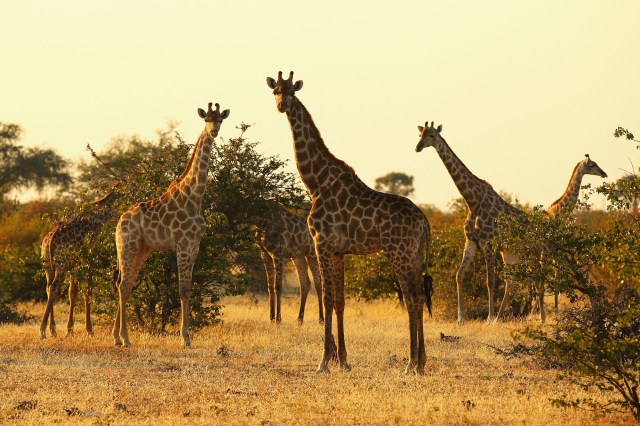Credit: Cameron Spencer / Getty

It’s become a social media cliché. A photograph or a video is posted of a (usually) American tourist posing with a (usually) African animal that he (or, occasionally, she) has just shot dead.
The comments below the post reflect the horror that most of us feel for such trophy hunters. What sort of person would make it a life goal to kill a giraffe?
And, yet, I think we’re in danger of misdirecting our outrage.
Joseph Stalin is supposed to have said “one death is a tragedy, a million deaths is a statistic”. He most probably didn’t, but the quotation expresses a bitter truth – and one as applicable to our destruction of nature as it is to man’s inhumanity to man.
Writing in the Guardian, Damian Carrington highlights a statistic that we must force ourselves to contemplate:
“The Living Planet Index, produced for WWF by the Zoological Society of London, uses data on 16,704 populations of mammals, birds, fish, reptiles and amphibians, representing more than 4,000 species, to track the decline of wildlife. Between 1970 and 2014, the latest data available, populations fell by an average of 60%. Four years ago, the decline was 52%.”
That is a truly alarming rate of destruction. But what accounts for the disappearance of so many animals?
“The biggest cause of wildlife losses is the destruction of natural habitats, much of it to create farmland. Three-quarters of all land on Earth is now significantly affected by human activities. Killing for food is the next biggest cause – 300 mammal species are being eaten into extinction – while the oceans are massively overfished, with more than half now being industrially fished.”
Then there are the habitats destroyed to raise the crops that we use to feed livestock – plus all the wild fish caught to feed farmed fish (every kilogram of the latter requiring multiple kilograms of the former, depending on species and rearing method).
So, one way or another, we’re eating the planet’s wildlife out of existence.
The decline isn’t just in vertebrate population either. Ben Guarino of the Washington Post reports on a sequence of studies showing massive declines biomass further down the food chain:
“In places where long-term insect data are available, mainly in Europe, insect numbers are plummeting. A study last year showed a 76 percent decrease in flying insects in the past few decades in German nature preserves.”
A recent study of a “pristine national forest in Puerto Rico” shows the same is happening there too:
“[Different sampling techniques] revealed the biomass (the dry weight of all the captured invertebrates) had significantly decreased from 1976 to the present day. The sweep sample biomass decreased to a fourth or an eighth of what it had been. Between January 1977 and January 2013, the catch rate in the sticky ground traps fell 60-fold.”
Though the habitat in question is physically intact, it has experienced a significant rise in peak temperatures over the last 40 years – a possible cause for the precipitous decline of species adapted to what should be a stable tropical climate.
In short, if we’re not hunting wild animals to extinction, we’re destroying, destabilising or polluting the habitats they depend on.
With seven billion of us and counting, we can’t help but make an impact on the planet; but there’s a lot that we could do to lessen that impact. And, yes, that does include changes to our diet and lifestyle.
It’s easy to vent our fury at the giraffe-killers of this world. The uncomfortable truth, however, is that almost everyone is complicit in an ongoing massacre of the planet’s wildlife.
Unlike the trophy hunters, we don’t look through the sights and consciously squeeze the trigger; nevertheless destruction does flow from the decisions that we all make.










Join the discussion
Join like minded readers that support our journalism by becoming a paid subscriber
To join the discussion in the comments, become a paid subscriber.
Join like minded readers that support our journalism, read unlimited articles and enjoy other subscriber-only benefits.
Subscribe